British Shorthairs are beautiful, kind, affectionate, and dignified cats. Their beautiful appearance and perfect personality have made them beloved pets all around the world. Today, we’re going to zoom in a little closer on one of the aspects that makes these cats so beautiful: the British Shorthair’s colors and patterns.
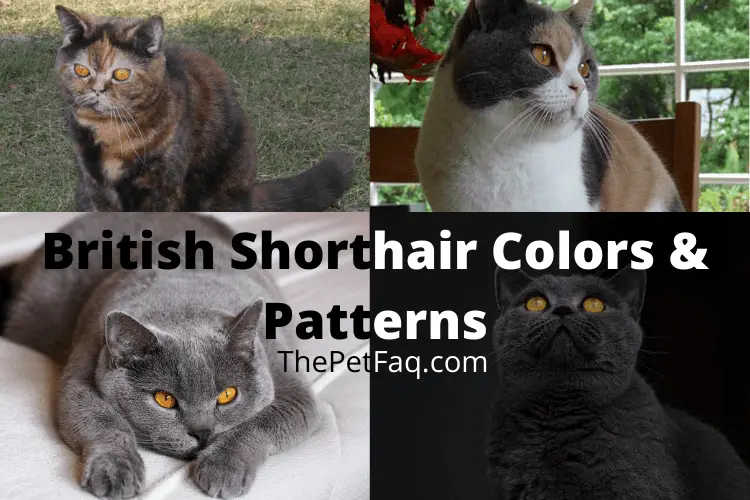
We’re going to be taking a look at all the possible colors and patterns that these beautiful felines can have. Also, we’ll give a brief explanation of every color along with some pictures to help you visualize all the possible combinations that these beautiful felines can have.
There are quite a few possible colors, so there’s plenty of choice for everyone!
Solid British Shorthair colors
We’re going to start off by taking a look at the solid colors that the British Shorthair can have. I will list them below along with a short description of what they look like and, of course, there will be pictures included!
White British Shorthair
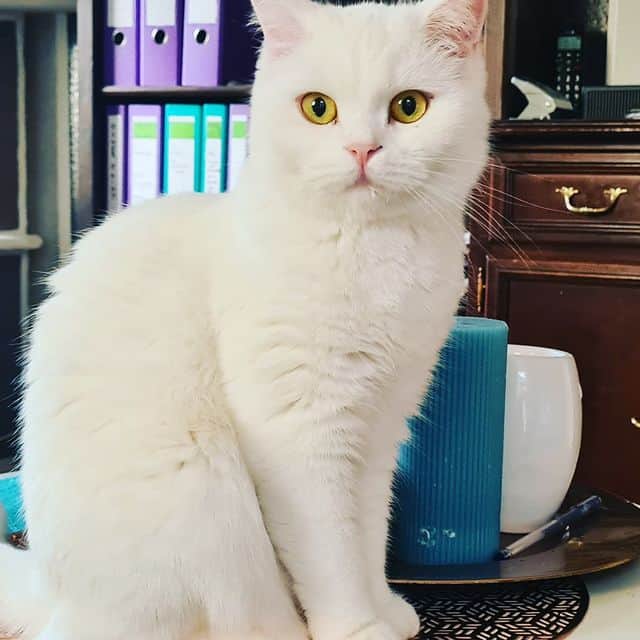
White British Shorthairs are characterized by their glistening white coat. Their coat is white all throughout with no other colorations or markings. Highly desired for their pristine white coat, these British Shorthairs are perhaps one of the most popular cats in the world.
The eyes of the White British Shorthair can be one of 3 colors: Blue, Gold/Copper, or Odd-eyed (meaning one of each eye color). Their paw pads and nose leather are pink in color.
Black British Shorthair
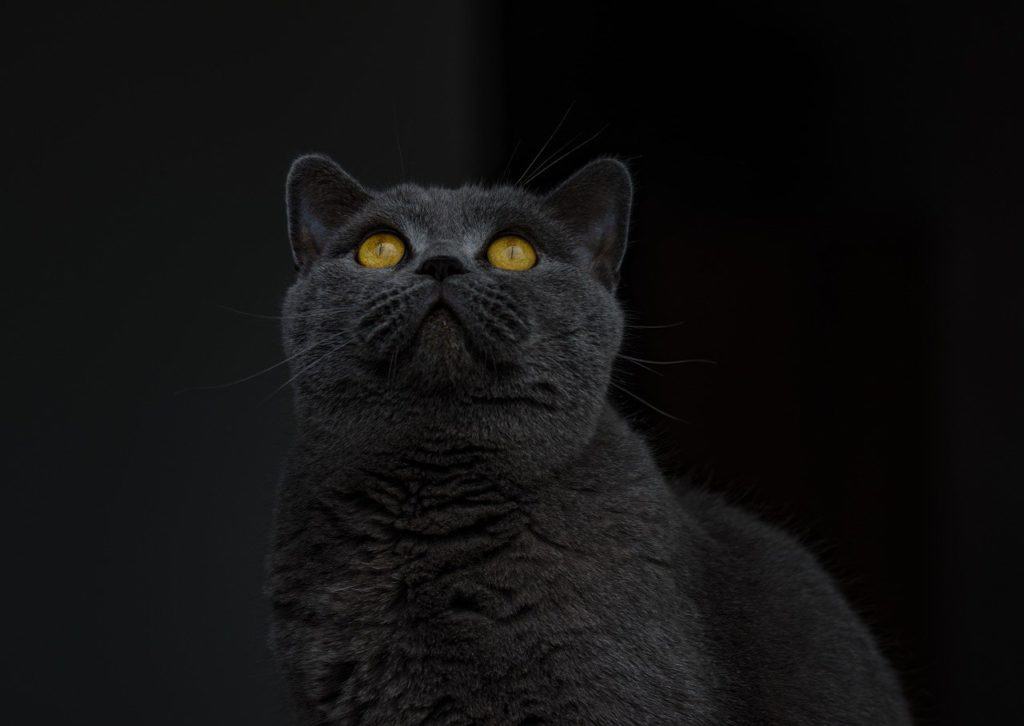
Black British Shorthairs have a coal dark black coat. Their coat is black all the way through, from the tip to the roots, with no other colors or markings. This gives the cat a striking, jet-black coat that’s highly desired among cat owners.
Black British Shorthairs can have gold or copper eyes. Their paw pads and nose leather are the same color as their coat: black.
Red British Shorthair
Red British Shorthairs have a coat that’s red in color. Many people consider this cat’s coat to be more orange in color than red, but the official naming for this color is indeed red. The hairs on their coat are red from tip to root and they do not have any other colors in their coat.
These cats have gold or copper eyes and their nose and paw leather is red.
Blue British Shorthair
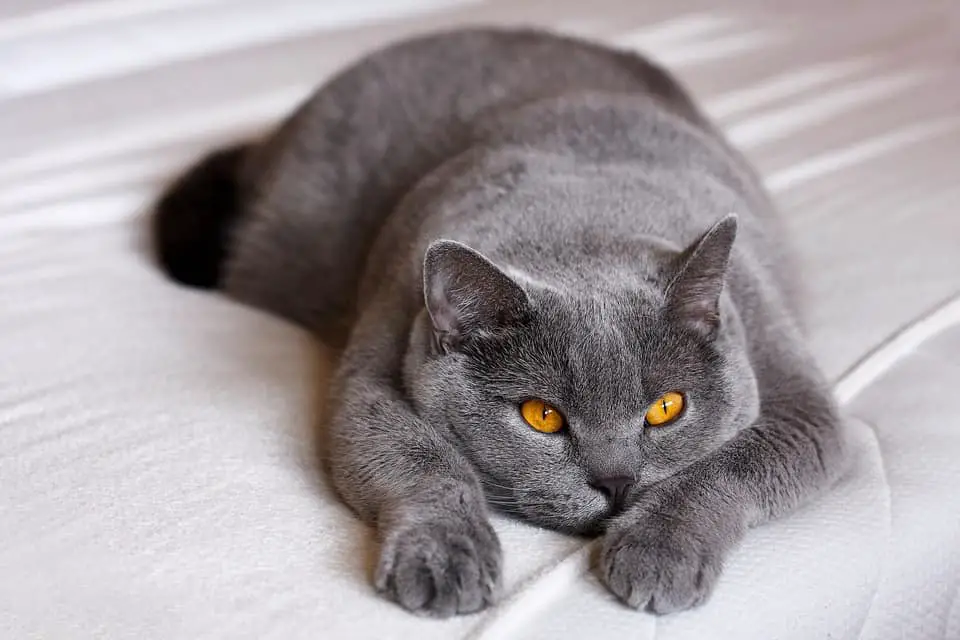
The Blue British Shorthair has a coat that’s often described as being gray. And while their coat does indeed look quite gray to many people, it does have a distinct blue hue. There is no official gray coloration in British Shorthair cats, so if you see a gray British Shorthair they’re officially a “blue” color.
Just like the other solid colors, a blue British Shorthair’s color is sound all the way through with no other colors shining through. The eyes of the Blue British Shorthair are a striking golden/copper color, giving them a very unique appearance.
Cream British Shorthair
The Cream British Shorthair has a beautiful cream-colored coat that’s sound all throughout, meaning there are no other colors or markings present. People often mistake cream-colored cats for being yellow, but the official naming for them is “cream”.
Tabby British Shorthair Patterns & Colors
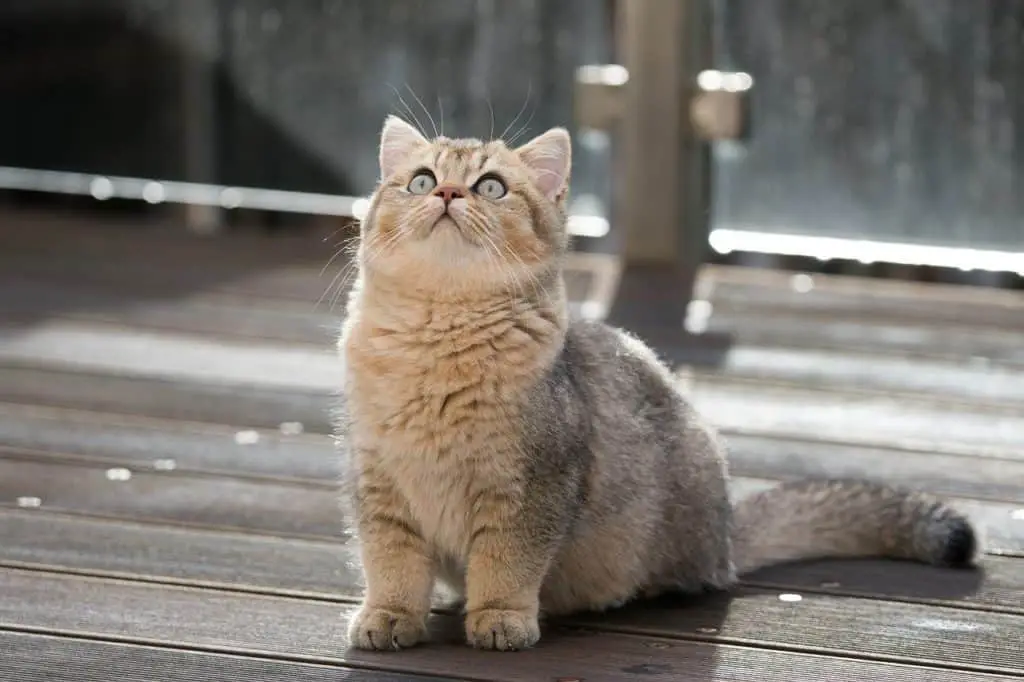
Now that we’ve gone over the solid colors that the British Shorthair can have it’s time to discuss patterns. We’re going to start with the Tabby patterns. There exist a variety of different tabby patterns. The ones that British Shorthairs can have are these:
| Pattern Name | Description |
| Classic Tabby Pattern | This pattern is defined by its dense, clearly defined, broad markings. They have bold, swirling patterns along the side of their body with a distinctive mark resembling a bullseye. They also have a butterfly pattern on the shoulder and 3 stripes along the spine. |
| Mackerel Tabby Pattern | Cats with this pattern have thin stripes on the sides of their body. Also, they have stripes running perpendicular to their spine. This is by far the most common tabby pattern. |
| Spotted Tabby Pattern | The Spotted Tabby Pattern is believed to be caused by a mutation of the Mackerel pattern, resulting in the stripes turning into spots. They have a similar pattern to Mackerel Tabbies, but with spots rather than stripes. |
The colors that tabby British Shorthairs can have are these:
- Silver Tabby
- Silver Patched Tabby
- Silver Patched Tabby and White
- Red Tabby
- Brown Tabby
- Brown Patched Tabby
- Brown Patched Tabby and White
- Blue Tabby
- Blue Patched Tabby
- Blue Patched Tabby and White
- Cream Tabby
- Tabby and White
The difference between regular and patched tabby is that the patched variety has patches of other colors in their coat, hence the name. The “and White” speaks for itself, it’s the same pattern, except with patches of white fur mixed in there!
Smoke British Shorthair
The Smoke British Shorthair is characterized by its coat that has hairs of two different colors. They have an undercoat that’s white in color while the tips of their hairs are any of the solid colors above.
The Smoke British Shorthair has a very unique appearance. The fact that their undercoat is a different color from the tips of their hairs means that they look very different in motion than when standing still.
Calico British Shorthair
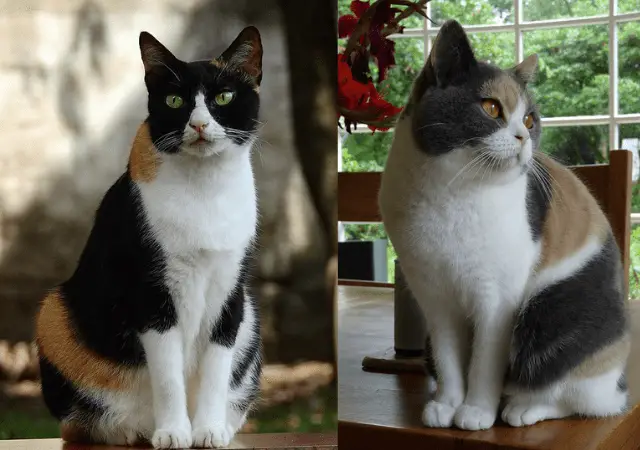
Calico British Shorthairs are characterized by their white bodies adorned with patches of red and black fur. The most interesting thing about calico cats is that they’re almost always female! Because of this, you can’t breed them which makes Calico British Shorthairs quite rare.
The Dilute Calico color pattern also exists. It’s very similar to the regular Calico except for the fact that they have patches of blue and cream rather than red and black.
Tortoiseshell British Shorthair
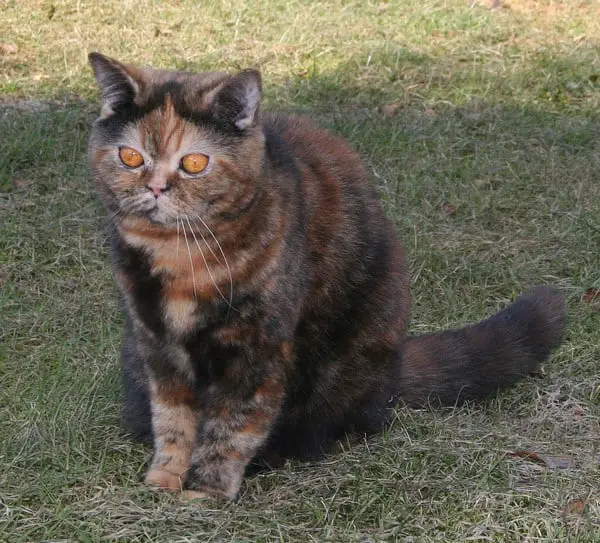
The Tortoiseshell British Shorthair combines two colors. These two colors can be anything except white. Oftentimes, they’re red and black in color. However, in Tortoiseshell cats, red can also be orange, yellow, or cream and black can instead be chocolate, gray, or blue.
Like the Calico, Tortoiseshells are also almost always female.
Van British Shorthair
The Van pattern is named after the Turkish Van. Basically, what this means is that the cat is completely white except for markings on the head and tail.
There are several different Van colors to be found in British Shorthairs:
| Color | Description |
| Van Bi-color | White British Shorthair with color on the head, tail, or legs. The colors on the head and tail can be black, blue, red, or cream. |
| Van Calico | White body with patches of red and black on their head, tail, or legs. The difference between this color and the previous is that the Van Calico has two colors in addition to white |
| Van Dilute Calico | The Van Dilute Calico is very similar to the Van Calico. The difference is that the Dilute variant has diluted colors. So, blue instead of black, and cream instead of red. |
Chinchilla and Shaded British Shorthairs
In the Cat Fancier world, Chinchilla means that the undercoat is one color, while the coat on the back, head, flank, and tail is tipped with a different color. There are 3 distinct Chinchilla colorations that British Shorthairs can have:
- Chinchilla Silver. A white undercoat with the coat on the back, flanks, tail, and head tipped with black. This results in the cat having a sparkling silver-like appearance.
- Chinchilla Golden. Honey/Apricot colored undercoat with the coat on the back, flanks, tail, and head tipped with black. This results in the cat having a golden-like appearance.
- Red Chinchilla (Also known as Shell Cameo). White undercoat with the coat on the back, flank, tail, and head tipped with red.
The Shaded color variety is very similar to the Chinchilla variety. For novices, it’s very difficult to spot the differences because they are almost identical. The difference lies in the amount of tipping. In the chinchilla color variety about one-eight of the length of the hair is tipped while in the shaded variety about one-third of the hair is tipped.
The Shaded British Shorthair has the same color combinations as the Chinchilla: Silver, Golden, and Red, just with a larger area of each individual hair being tipped.
Is each different color a separate breed?
People often get this confused, but the answer is no, the different colors are not different breeds. They’re all British Shorthairs, which is the breed, they just have different colors and patterns!
Does a Lilac British Shorthair exist?
Lilac British Shorthairs do exist, but they’re not recognized as a distinct color by Cat Fancier organizations such as the CFA and TICA.
What is the rarest British Shorthair color?
There are no official statistics on which colors are the rarest. However, for most cat breeds white is one of the rarer coat colors, with only 5% of cats being white.
Does a Chocolate British Shorthair exist?
Chocolate British Shorthairs do exist. However, like the Lilac British Shorthair, Chocolate is not an officially recognized color for British Shorthairs by the CFA.
Do Color Point British Shorthairs exist?
Color Points, such as lynx, seal, grey, red, tortie, and black point British Shorthairs do exist, but they’re not an officially recognized color by the Cat Fancier’s Association.
Final words
It was a long journey, but you’ve reached the end. You now officially know everything there is to know about British Shorthair colors and patterns! Hopefully, your head is not overwhelmed by all these beautiful cat colors and patterns and it helped you make a decision on which one is your favorite.
With so many colors and patterns, it can be a hard choice to make, especially when they’re all so adorable.
- How Long Do American Eskimo Dogs Live? Important Factors and Care Tips - September 29, 2023
- Do American Bulldogs Need Grooming? Essential Tips and Care Guidelines - September 29, 2023
- Do Bengal Cats Enjoy Playing? Essential Tips for Keeping Them Active - September 29, 2023